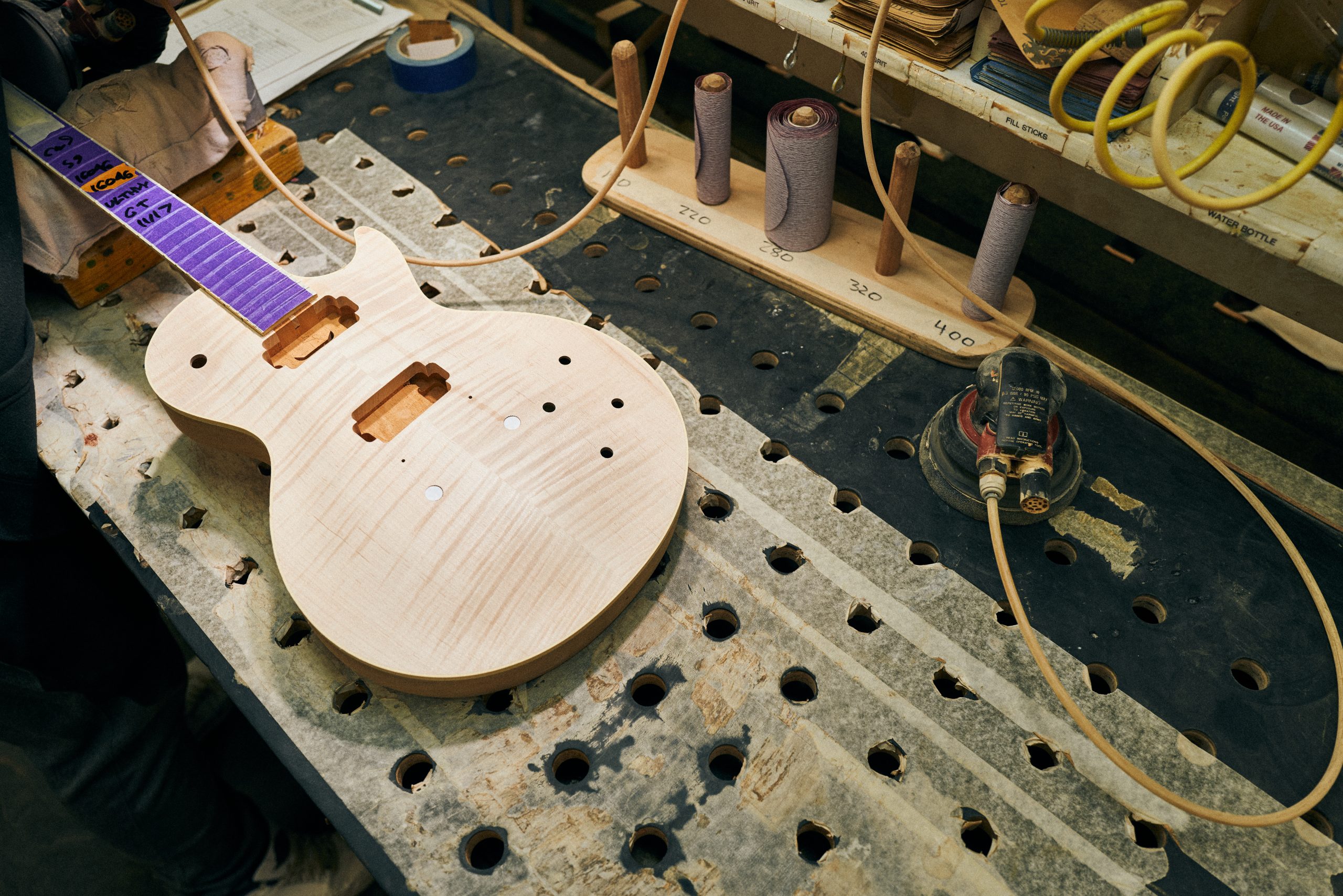A deep dive into the wood species we use to craft your Gibson and Epiphone electric and acoustic guitars
Based on over 280 combined years of innovation in the musical instrument business, Gibson and Epiphone guitars and basses are crafted with high-quality tonewoods for the finest sound and performance. Read on to find out more about the main ingredients in Gibson and Epiphone electric and acoustic guitars and basses, their tonal properties, and more.
What is a “tonewood” and what does it mean?
The word “tonewood” is used to indicate species of wood suitable for use in the manufacture of stringed musical instruments, such as electric and acoustic guitars. Favored species have varied throughout instrument-making history as lutherie has evolved, but generally, acoustic soundboards are made from stiff but light softwoods from coniferous trees such as spruce.
Deciduous hardwoods such as maple and mahogany are preferred for the backs, sides, and necks of acoustic instruments and the bodies of electric solidbody designs. In addition, figured woods such as curly maple are chosen for a combination of their tonal and aesthetic properties.
Which tonewoods are used on Gibson and Epiphone guitars and why?
Gibson and Epiphone guitars are manufactured based on time-honored recipes designed to deliver the most iconic and instantly recognizable electric and acoustic guitar tones in music. Although variations will sometimes occur—perhaps in a limited run that puts a different spin on a classic model by using exotic wood species, or occasionally due to availability issues—we strive to always use the best materials.
What follows is a list of the principal woods used to manufacture Gibson electric and acoustic instruments in our craftories in Nashville, Tennessee, and Bozeman, Montana, and Epiphone models in our wholly owned craftory in Asia. Epiphone USA instruments manufactured in Nashville and Bozeman are handcrafted using the same materials as Gibson-branded instruments from those locations.
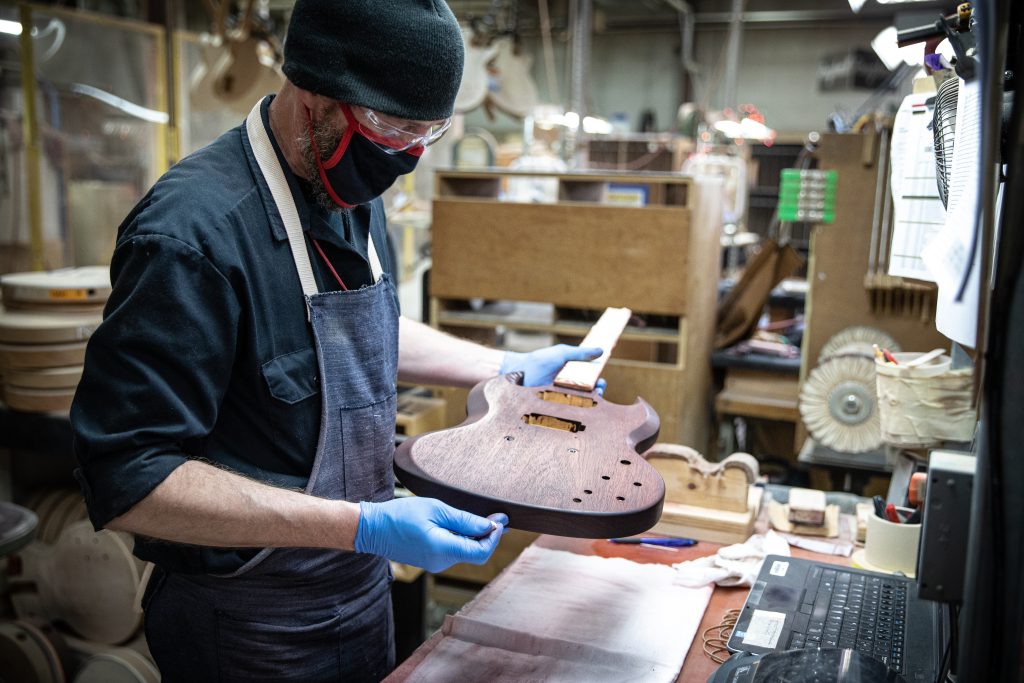
Mahogany
The term “mahogany” is typically used and defined in broad terms by common characteristics such as density and appearance. In the musical instrument industry, those characteristics extend to sonic properties. Thanks to its rich low-end, midrange response, and natural sustain, mahogany has a long history in guitar-making. This is especially true at Gibson, where it has been used for 130 years and remains a key part of the sonic signature of the greatest electric and acoustic guitars of all time, including the Gibson Les Paul Standard and J-45.
When you see “genuine mahogany” on our website, it refers to one specific species (Swietenia macrophylla, also known as Honduras or Big Leaf South American mahogany), which Gibson continues to use thanks to sustainably managed and responsibly harvested forests in Fiji and Guatemala. Alternatives to genuine mahogany with a striking resemblance both visually and sonically include Khaya (aka African mahogany, a genus of five species within the mahogany family Meliaceae), okoume (Aucoumea klaineana, aka Gabon mahogany), and sapele (Entandrophragma cylindricum). Epiphone guitars and basses listed as having “mahogany variety” bodies or necks are typically crafted from okoume or sapele.
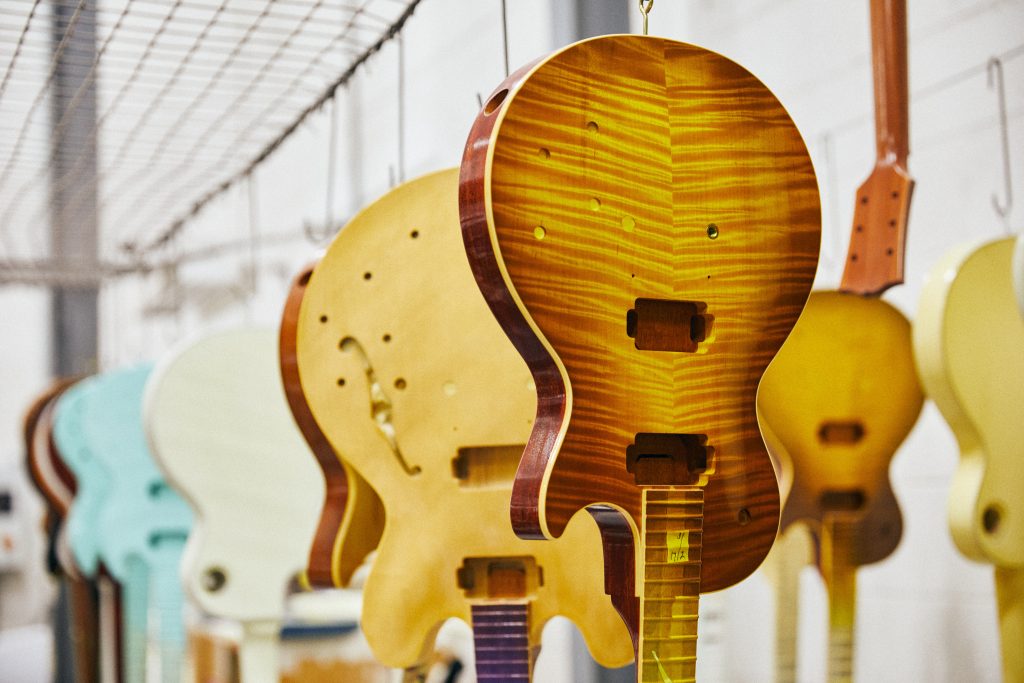
Maple
Maple is another material synonymous with Gibson and Epiphone guitars from the vintage era, both in plain and figured forms. Whether it’s the flamed maple top of a Les Paul Standard or the hollow laminated maple and poplar body of a Casino, the clarity, bite, and sustain of maple has featured on many of the greatest recordings in the history of popular music, in the hands of the world’s biggest stars.
Many modern Gibson and Epiphone instruments are constructed from plain and figured maple from maple trees harvested in Canada, the USA, and Europe. The main species used for figured maple are red maple (Acer rubrum) and big leaf maple (Acer macrophyllum). Plain maple is mainly hard maple, aka sugar maple (Acer saccharum).
Sugar maple (Acer saccharum) is not only famous for its use in musical instruments, but it’s also a major source of maple syrup, and the trees are known for their vivid fall foliage. The International Union for Conservation of Nature currently classifies sugar maple as being a species of “least concern,” as it is still plentiful in the wild in various parts of the world.

Spruce
Thanks to its consistency, clarity, and broad dynamic range, spruce is an industry-standard material for the soundboards and bracing of steel-string acoustic guitars. An essential part of the recipe for Gibson and Epiphone acoustics, spruce is also used for the bracing on hollow and semi-hollow electric guitars, and even for the tops of Epiphone jazz guitars such as the Broadway. It also ages beautifully over time, darkening naturally and taking on a golden-amber hue as the years go by.
Gibson acoustic guitars typically feature Sitka spruce (Picea sitchensis), while the most common variety of spruce used on Epiphone instruments is Picea asperata, otherwise known as dragon spruce, though Epiphone archtops may use European spruce (Picea abies). All three of these spruces are classified as species of “least concern” by The International Union for Conservation of Nature.
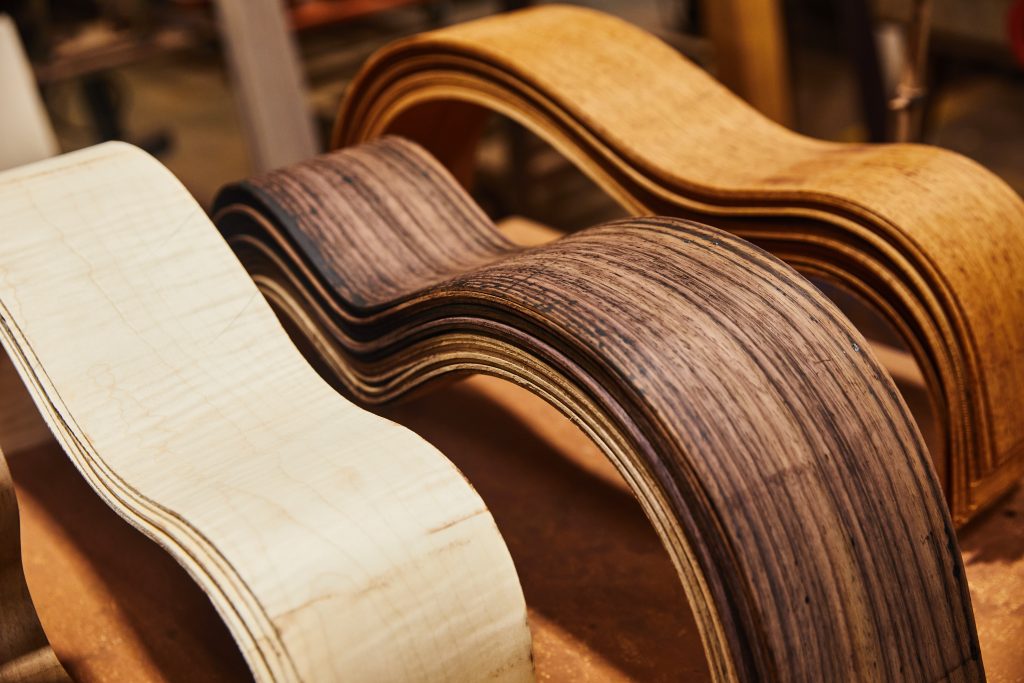
Rosewood
Prized for its richness and warmth, rosewood is the most commonly used fingerboard material on Gibson guitars. It’s also a sonically and visually appealing choice for the backs and sides of acoustic instruments. Until the mid-late 1960s, the main rosewood species used on Gibson and Epiphone instruments was Dalbergia nigra, aka Brazilian rosewood. Due both to habitat loss and poor regeneration rates among existing populations, today, Brazilian rosewood has endangered status, and trade in it is restricted. Gibson Custom reserves its very limited supply of certified Brazilian rosewood for the most premium vintage reissue models, which are currently only available in the USA.
Today, the majority of Gibson and USA-made Epiphone models feature Indian rosewood (Dalbergia latifolia). Though not without its own environmental challenges, 2019 saw the CITES restrictions on Indian rosewood relaxed, allowing musicians to travel with Indian rosewood instruments without a permit and instrument manufacturers to import and export the material with fewer difficulties.
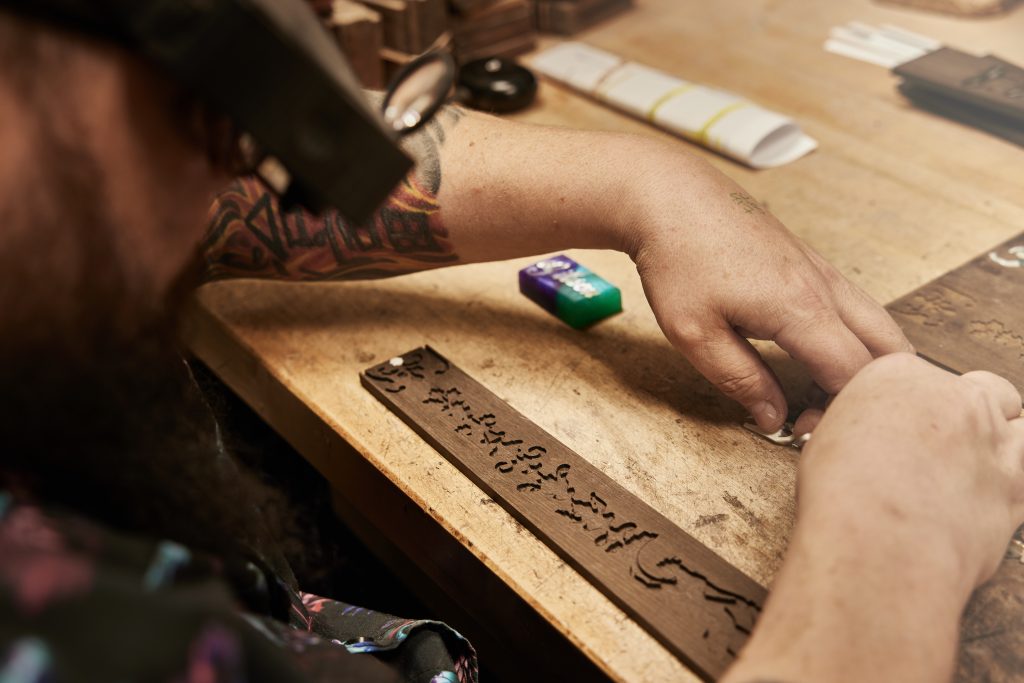
Ebony
The brightness and articulation of an ebony fingerboard is a key part of the sonic identity of iconic Gibson models such as the Les Paul Custom and ES-355, and a great deal of effort has been undertaken in recent years to make the ebony trade more equitable and sustainable so that a healthy supply is maintained. In addition to its timeless appeal across traditional music genres, ebony (Diospyros ebenacea and Diospyros crassiflora) is a popular fingerboard material among the new breed of technical metal players. As a result, it can be found on models in the Epiphone Prophecy Collection, where its fast attack and smooth feel aid clarity and accuracy in low-tuned, high-gain rock and metal scenarios.
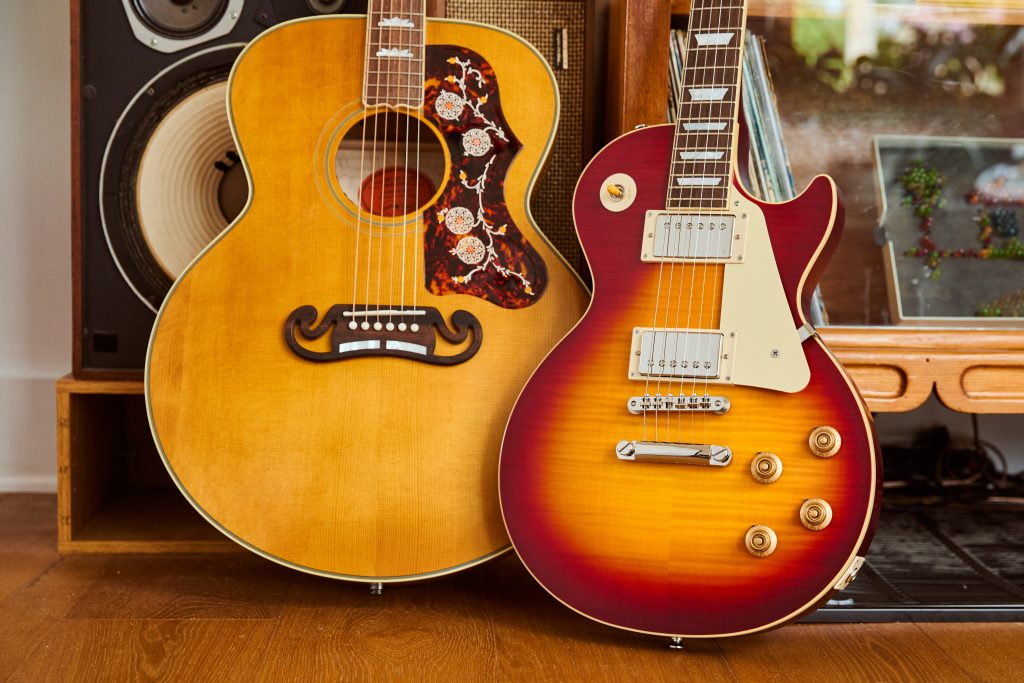
Laurel
For many years, the majority of fingerboards on Asian-made Epiphone models were manufactured from Indian rosewood (Dalbergia latifolia). However, rosewood’s protected status prompted us to make the shift to laurel (Laurus nobilis) on Epiphone models made outside of the USA. Very close to rosewood tonally and typically featuring a pleasing dark-brown coloration, laurel is abundant globally and is classified as a species of “least concern.”
Find out more about how Gibson guitars are made by watching “The Process” on Gibson TV.

